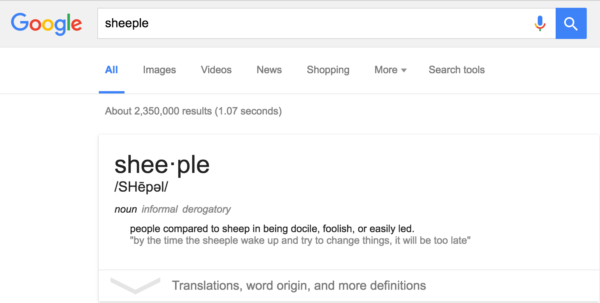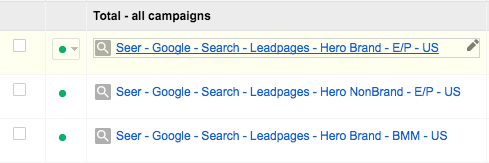How do our biases impact PPC performance?
With experience comes wisdom, but columnist Brett Middleton believes that search marketers can sometimes limit themselves by clinging to old habits.
I’ve come to believe that the essence of PPC management can be boiled down to two things:
- Never let one thing (keyword research, bid management, A/B testing ad copy and so on) take up so much of your attention that you let something else slip.
- What you did yesterday probably needs to be changed, and failing to adapt your methodology is as bad as having an empty “Change History” log.
As you gain more experience in PPC, you start to develop patterns and favorite tactics out of necessity. We bring tools that worked in the past to each new campaign or ad account. People are paying us for our past experiences and how these experiences translate into future potential.
But are the things we believe about PPC the very things holding us back from fully optimizing an account?
I will absolutely agree with anyone out there who feels that the biases we develop in fact make us much more efficient in management. However, I would also say that our biases can hold us back.
Let’s take a look at a three examples. As you read along, consider your own management habits and how you may have sped up the process over the years.
Spare the Bing, spoil the Google
I personally have been guilty of neglecting Bing Ads. I let Bing Ads move in but made it live in the closet under the stairs (and, much as you would expect, it became a wizard).
Now, part of this was because Bing’s universal event tracking (UET) is much less intuitive, and we simply didn’t take the right steps to make sure revenue tracking was working perfectly. It’s Bing Ads! Do we really need to try that hard to get it going? Why can’t it just be more like Google? After a meeting in which we reviewed the UET code implementation and got Bing’s revenue tracking working correctly, I watched the results in horror/excitement.
Our Bing campaigns are operating at an ROAS five times higher than Google. The search volume isn’t as high, that’s absolutely true — but almost every campaign has been severely limited by budget because we just didn’t see it as worth a major investment.
Every time you have taken on a new client (or, if you’re in-house, every time you’ve evaluated your PPC for optimization paths) and have failed to do a significant test of Bing Ads, you have probably done yourself a disservice. Obviously, there are several reasons that this bias came to be.
People think Bing Ads is less reliable than AdWords, want to find out if it’s any good, and are just generally wondering if it’s even worth trying. I’ve always said that these are all reasons you should be in Bing Ads. As marketers, don’t we dream of finding that converting channel that our competitors aren’t in?
Can we all agree to get on board here and give Bing Ads a shot? Unless you’re in my industry, in which case, just ignore all of this.
Separating match types
Now, I don’t have another 1,000 words to get into the question of whether or not you should segment your ad groups and campaigns by match type. (I don’t think you should — but if you must, do it at the campaign level, please! At least you can control the budget that goes to each match type that way.)
The fact is, you probably made the decision on separating or not separating match types fairly early in your PPC career; you very likely also made the decision after someone told you what to do. I was very opposed to separating by match-type, but my current campaigns do it at the campaign level. That’s fine with me for right now, although I cringe when I see the number of campaigns.
I can’t stress enough that when people make recommendations, it’s based on their own experience and biases. Don’t let that be the factor that determines EXACTLY how you will manage PPC campaigns. Every piece of advice, including the words I’m writing now, should be examined and tested by yourself.
If you have always separated match types into different ad groups within a campaign, why don’t you try separating them into campaigns for a quarter, and then don’t separate them at all in the next quarter? Shake things up! Make your own decisions!

Very subtle, Google.
One thing I have learned from attending search marketing conferences is that there is always someone out there who knows more than you do, and he or she will say things that get you excited to go home and try them out. That is an incredible thing to experience.
You should always chase after something if it makes you excited about your job, but I caution you to always test each idea against your current philosophy. The tactics and strategies you learn should give you something not only to potentially mimic, but also to act as a catalyst for ideas of your own.
Ad copy formatting
Oh boy, here’s another place where I’m simply not going to dive deep into how you should write your ad copy; that’s is a big topic. But consider how you typically write ads. Do you…
- include a CTA in the headline, or just give info?
- use all caps in the description, or follow capitalization rules?
- use URLslugs as another line of copy, or leave it blank?
- keep it short and sweet, or use every single character available?
Don’t you think you should have a constantly evolving process that encourages testing and retesting (and then testing that again)? Ad copy isn’t always brilliant. It isn’t always right. But when you write something new, spend some time on it and change the way you do it. You’re absolutely not going to like each ad, but keep iterating.
Final thoughts
The very next thing you do when you log into your AdWords account (after importing it into Bing) should be to start testing what I’ve said here, and not just think about the specifics I outline. Evaluate your entire management strategy on a monthly basis, and look for gaps, testing areas, things you do that you have just… always done.
Pushing yourself and adapting is how you make a noticeable difference. Best of luck, PPC people!

